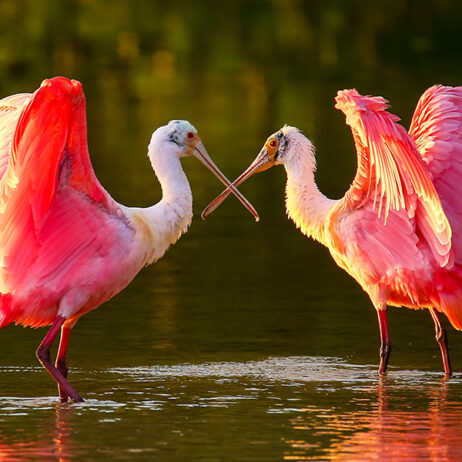
Fewer than 1,000 mature Black-and-chestnut Eagles are thought to be left worldwide, but in Santiago, these raptors – one of the largest of the Andes – now have a safer natural home. Image credit: Nina Seale
After four years of hard work by our partner Naturaleza y Cultura Ecuador (NCE), the Santiago Municipal Reserve was officially declared earlier this month – a link between two national parks in Ecuador and an expansion of vitally important habitat for endangered species, made possible by World Land Trust (WLT) supporters as part of a coalition of international partners.
Funded in part by donations to our Action Fund, the Santiago Municipal Reserve represents a milestone in Ecuador. This is the first time in the country’s history that a municipality has declared a conservation area adjacent to a national park, let alone two: Sangay and Río Negro Sopladora, both located across the Andes.
Wedged between these national parks, Santiago’s newly protected 34,051 acres (13,800 ha) deliver a crucial expansion of the Sangay-Podocarpus Connectivity Corridor. Itself a history-making stretch of land – last year it became Ecuador’s first corridor of its kind – Sangay-Podocarpus today spans 1.4 million acres (566,000 ha) of diverse and fragile ecosystems, including parts of another reserve (Podocarpus – El Condor Biosphere Reserve) where WLT work alongside NCE.

Additional funding has allowed for two further protected areas to be established, to the east of the main Santiago reserve. Image credit: WLT
However, the value of the Santiago reserve goes beyond its strategic position. These montane forests and paramo grasslands have remained largely intact, but the protection offered by the new municipal reserve status has come just in time. Had no action been taken, these near-pristine habitats would have faced cattle ranching and timber cutting; two threats, driven by the search for prime pasturelands and the global demand for balsa wood, that have already degraded many areas in the region.
Now, thanks to an international effort supported by WLT’s Action Fund, the wealth of wildlife within Santiago has been given a new lease of life. This is a reserve where scientists have already recorded 344 plant species, as well as 152 species of bird, 57 amphibian, 47 mammal and 11 reptile.

Ecuador’s newest reserve contains 344 plant species, 22 of which are endemic. Image credit: Fabian Rodas
Charismatic residents of the area include threatened species such as the Mountain Tapir and Black-and-chestnut Eagle, both classified as Endangered. Though these two are resident elsewhere in South America, Santiago is also home to 30 amphibians and 22 plants that are endemic to Ecuador – species like Boulenger’s Stubfoot Toad, classified as Critically Endangered and known only from this part of the country.
Strategic link protects home of roaming Jaguar and water source for communities
The protection of a crucial link within the Sangay-Podocarpus corridor will offer an immediate lifeline to far-ranging roamers like the Jaguar and Spectacled Bear, two species whose habitats have become increasingly fragmented in recent decades.
And yet the connectivity benefits from Santiago’s declaration will go much further than Sangay-Podocarpus, where 75% of the land is protected. North of the corridor’s limits lies an additional, 200-mile-long contiguous spine of reserves and national parks all along the eastern Andes, connected in the middle by WLT-backed reserves in the Llanganates-Sangay Biological Corridor managed by our partner Fundación Ecominga. This network of protected areas, now connected to Santiago, covers around 4 million acres – nearly twice the size of Cyprus!

This colossal corridor includes five national parks and a number of reserves both large and small. Image credit: WLT
The strategic position of NCE’s newest reserve grants it particular significance in the context of Ecuadorian biodiversity protection, but it’s not just the wildlife that will benefit. The declaration of Santiago grants official protection to water sources that provide power for hydroelectric plants, as well as clean water for 15,000 people living in nearby cities and communities.
And there are benefits for the global efforts against climate change, too: the landscape of Santiago also serves as a carbon sink, sequestering an estimated 5 million tonnes of carbon while absorbing more from the atmosphere every day.

Santiago’s protected status will now prevent millions of tonnes of carbon from being released into the atmosphere. Image credit: Fabian Rodas
The declaration of the Santiago Municipal Reserve was achieved thanks to collaboration between NCE, the municipality of Santiago, the FONAPA water fund, and Ecuador’s Ministry of Environment and Water. Financial support was provided by WLT, Bobolink Foundation, Andes Amazon Fund, and Natura International.

